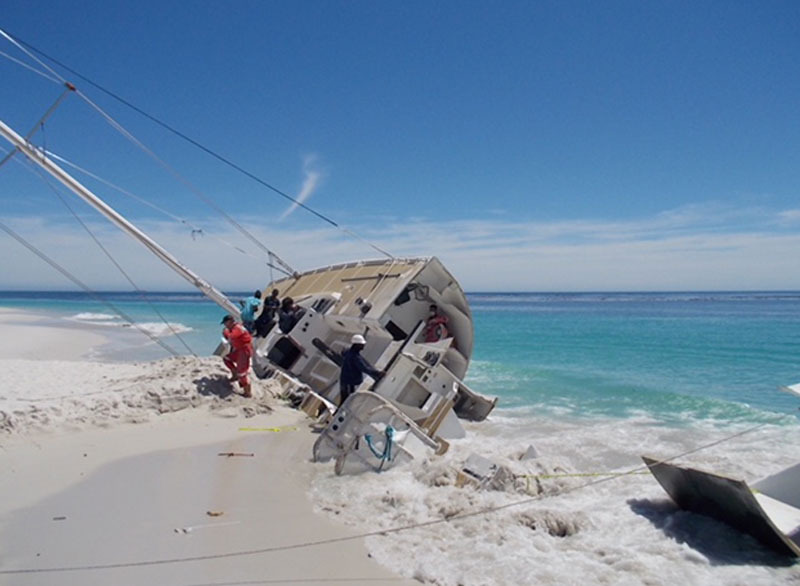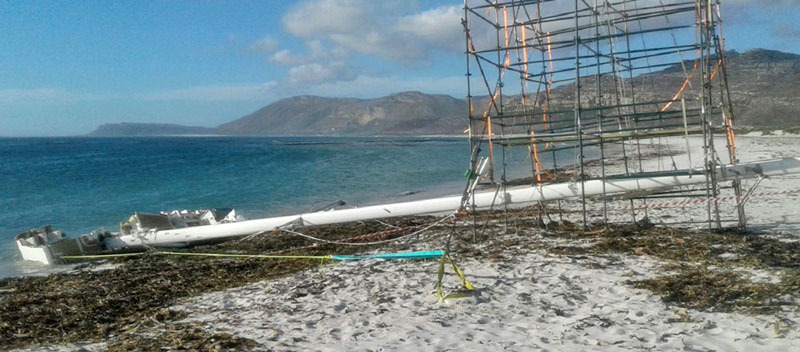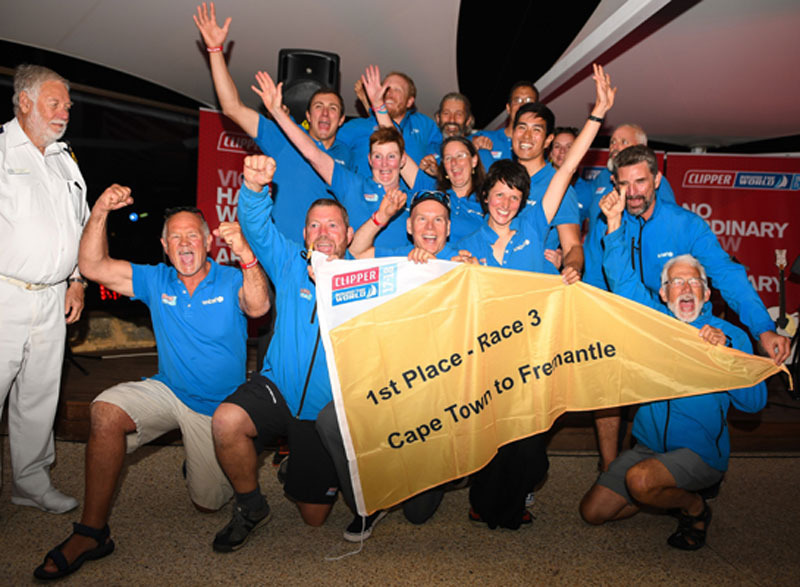
Clipper Race News
It’s been less than one month since the Clipper 70 Greenings ran aground on the opening day of the Clipper’s Race 3. While the remaining 11 boat-fleet has now completed the race into Fremantle, Western Australia, the salvage operation to remove the monohull from Cape Peninsula is also now close to completion.
Following the incident on October 31, all crew were quickly evacuated from the yacht by the local rescue service, NSRI, with no injuries reported. After being contracted by the Clipper Race, Navalmartin promptly dispatched local admiralty expert and surveyor Peter Brinkley from Cape Town and instructed a salvage team to assess the situation.
Pollution control was of paramount importance. "The first task was to remove all the diesel fuel from the tanks," said Brinkley. "This was done quickly and no spillages occurred."
After reviewing the state of Greenings (CV24) over the following 48 hours, it was unfortunately decided that the vessel would take no further action in the Clipper 2017-18 Race, and subsequently that it was beyond repair and should be removed by salvors.
The removal contract was awarded to the Subtech Group/Ardent, which specializes in marine services, including salvage projects, throughout Sub-Saharan Africa. With an operating base in Cape Town, a team was quickly mobilized to work with the South African Maritime Safety Authority (SAMSA), the Department of Environmental Affairs (DEA) and the casualty management team to oversee the cleanup operation and wreck removal.
Sir Robin Knox-Johnston, the event’s founder and chairman, explained: “Once the assessment had been made that the vessel was not repairable, our aim was very clear; we needed to deal with the situation quickly with the priority of minimizing environmental impact and returning the beach to its original state.”
On the work that has been done over the past weeks, Peter Brinkley adds: “We faced a number of early challenges to the removal which included obtaining access to the beach, as it is in a very remote location; and also a bush fire started in the surrounding veld partway through the operation, which delayed efforts for a few days.
“It was a priority to work quickly; the varying weather conditions only gave us small windows of time to carry out the task at hand. Time was working against us. We had to deal with the incessant influx of sand at high water brought in by the breaking waves and exacerbated by bad weather. We have to deal with the added challenge that no vehicles would be allowed through the reserve to access or move the yacht.
“Subtech opted to erect a tower made of scaffolding material to support the mast before we could start cutting the hull up from the forward and aft sections, dismantling components onboard, and removing the engine. The removed hull pieces were transferred into cargo nets and loaded onto a truck for disposal.”

“We had some pretty big swells along the coast while the work was underway," continues Brinkley, "which did hamper the efforts significantly at times. At one point the waves reached four meters and battered the yacht, undercutting the scaffolding, which sank approximately 400 millimeters.
“The mast has now been lowered gently using the scaffolding tower. Only the keel and some of the bottom and port-side shell remain, and they are buried in the sand, however we expect these final parts to be removed in the coming days and the beach will then be restored. Much of the hull and deck gear has already been airlifted away from the site.”

Speaking about the loss of CV24, Sir Robin says: “She had completed two round-the-world voyages, one of which she was the winner, as LMAX Exchange, and had an unbeaten streak in the 2017-18 race. It’s always just desperately sad to see a fine vessel finish its story like this.”
A full investigation is currently underway into the reasons for the grounding, and the Clipper Race promises to publish the findings as and when they are available. The rest of the Clipper Race teams will all welcome various Greenings crew aboard to continue their remaining race legs.
Following the relief of getting to port after an incredibly tough and emotional leg, now officially known as the most challenging in Clipper Race history, the participants gathered for the prize-giving. First though, everyone joined together on the grass outside the Fremantle Sailing Club for a memorial service for Simon Speirs, who lost his life at sea during this leg. Led by a chaplain from the Mission to Seafarers, GREAT Britain round-the-worlder Tessa Hicks and skipper Andy Burns read words. Simon’s family provided a moving tribute read on their behalf.

The fleet will depart Fremantle on Race 4, the 2,500-mile race to Sydney, on December 2. See www.clipperroundtheworld.com.
